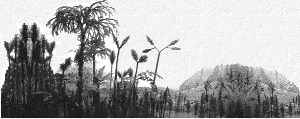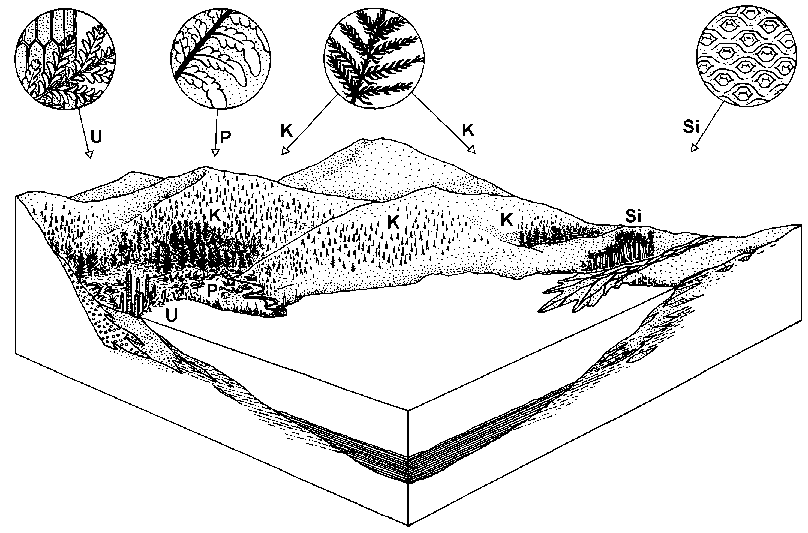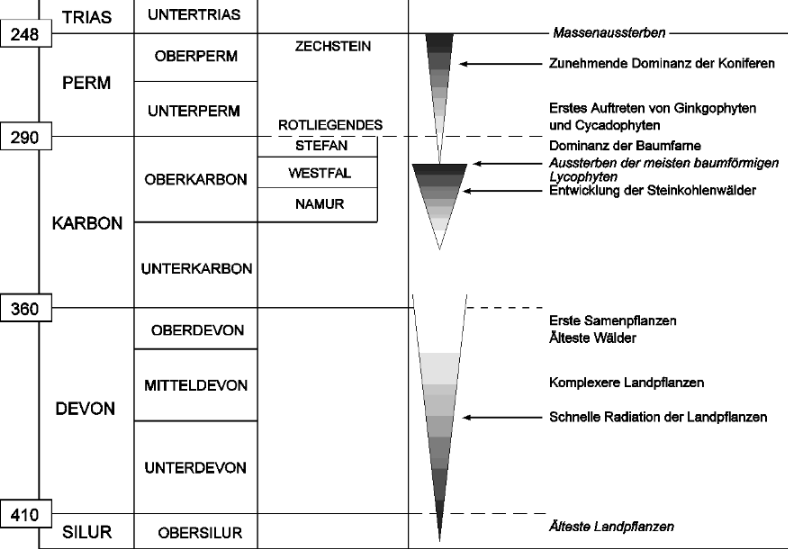
Part 3
Many older palaeobotanical textbooks distinguish a clear floral break within the Permian. This is the so-called Palaeophytic-Mesophytic boundary (e.g., Gothan & Weyland 1954). The Late Permian Zechstein floras of northwest and central Europe indeed show considerable differences compared to the Rotliegend floras. However, in later years it has become clear that the Zechstein represents only a rather limited amount of time, and that the northwest and central European Permian is very incomplete. Moreover, many sediments are unfossiliferous. A few years ago conifer-dominated floras including taxa which can be considered as direct descendants of Rotliegend conifers have been described from the Upper Permian of the Italian Alps. Moreover, palynological investigations have shown that the succession is much more continuous than was assumed until recently. The more complete classical succession in Russia shows a very gradual development of the flora that does not support the assumption of a Palaeophytic-Mesophytic floral break in the Permian. The differences that have been emphasised in the earlier literature thus rather refer to the incompleteness of the fossil record and our knowledge than to hard facts. Although within Europe certain differentiations can be noted, the floras of the Upper Permian generally have a very low diversity and are dominated by conifers. Many of these forms have thick and fleshy leaves, usually with thick cuticles covered by many hairs. This suggests a warm and dry climate. An arid climate is also indicated by the presence of thick evaporite deposits. Also pteridosperms partly show such adaptations to an arid climate.
Fig. 6: An Early Permian landscape in the Saar-Nahe Basin.
U = lake margin vegetation with calamites, ferns and a few seed ferns; Si =
Sigillaria stand in a deltaic environment;
P =
pteridosperm-dominated vegetation; K =
conifer-dominated hinterland vegetation.
According to recent estimations, about 95% of all plant and animal species and 50% of all genera became extinct at the end of the Permian (Erwin 1993). This is the largest mass extinction in Earth's history. However, macropalaeobotanical data are not available because the uppermost Permian and lowermost Triassic are virtually always developed in a marine facies. Therefore, the floral record exclusively relies on palynological data. The causes of this mass extinction are still being discussed and a generally accepted scenario has not yet been put forward. Although many plant species and genera became extinct, the larger groups of plants mostly persisted. Many genera of conifers which were dominant in the Late Permian disappeared, but were replaced by others and also in the Triassic conifers were often predominant. This is in strong contrast to the fauna; several groups of animals became completely extinct like the trilobites.

Fig. 7: The stratigraphy of the Upper Palaeozoic with the most important floral developments.
For further literature on Palaeozoic forests please refer to the above mentioned publications.